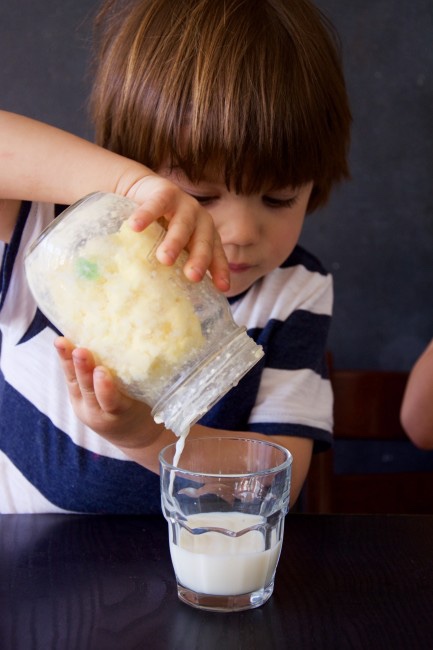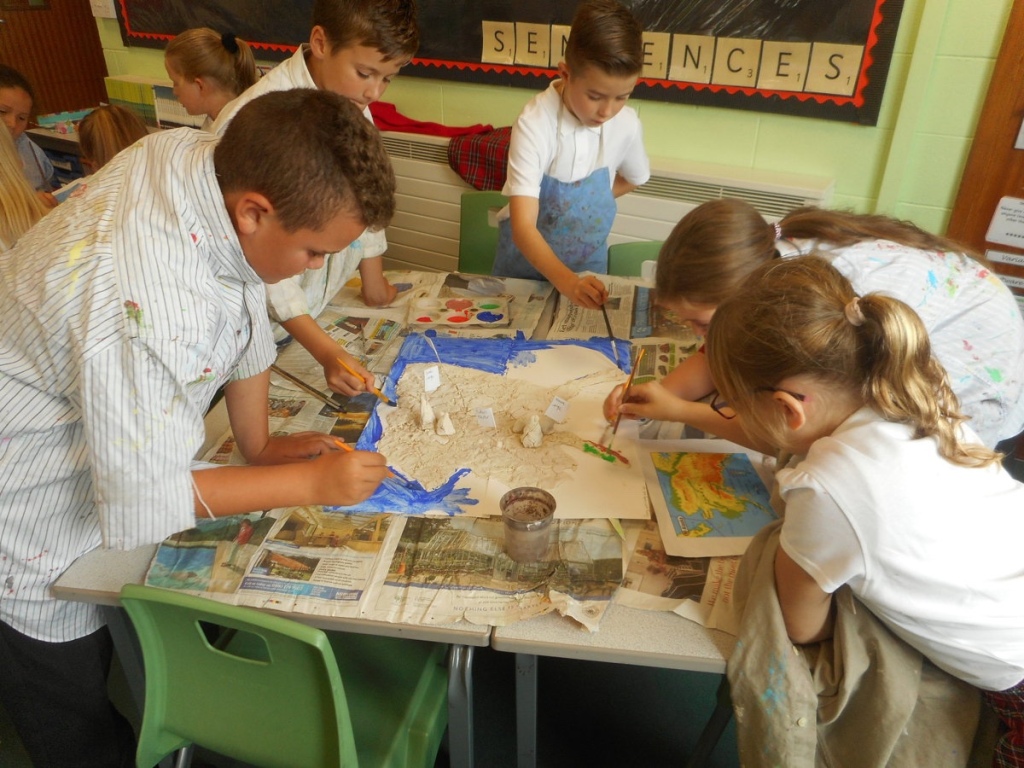Pay attention to the level of EXPECTATION accorded these Great Depression children in the long ago Chicago Public Schools. The 1st graders were constructing full-blown houses using cardboard, construction tools, measuring equipment, clay and fabric. Now for the 2nd graders.
Yes, the 2nd levels are building a farmhouse, barn, silo, sheepfold, pigpen, fences, grass, mock cornfields, trees, figurine families and farm animal models. Are you kidding me?

Think about it. We are not talking about these 1935 Chicago students pulling a Farm set out of a supply closet and setting it up in a classroom or at home. We are watching smart city kids learn and draw or create the constituent elements of a farm like miniature wagons, wheelbarrows, vegetable stand, scales for weighing produce and signage for each group of produce being sold.
These children went on to use clay & paint for model fruits and veg. They made butter. They sprouted seeds in eggshells, sponges or in a home/window box “garden”. They made a Weather Chart because guess what? The local weather has everything to do with a successful crop.

Here is what the 1935 2nd graders were advised on the topic of farm BUILDINGS. “The house, barn and other buildings may be made of construction paper or any paper colored with crayons and pasted together. Suitable buildings can also be made from cardboard boxes, cutting holes for windows, doors and attaching corrugated paper for the roof. The barn silo may be formed using paper and in proportion to the barn. A windmill frame may be made from dowel rods or thin strips on boxwood tied together. The wheel and vanes are cut from tin, thin wood or cardboard. Fences may be made from twigs or thin strips of boxwood or balsa wood. Gate hinges may be made from small pieces of leather and fasteners from scrap wire. People and Animals can easily be made in silhouette form or actually modeled in clay. Roads, fields and trees are represented with sandpaper, towel fabric, twigs, sponges, steel wool and dried grass.
Remember that as these students work, they are maintaining careful/consistent records and reflections on their work. They are drawing illustrations of finished products. Today we would cellphone photograph. They are writing to describe in detail, and with precise vocabulary, the work they are engaged in. This is not sloppy process.
After the FARM was finished, these same 2nd grade children went on to create an entire City Park in exquisite detail.

Name the subject matter and it was woven into this work. And at a much higher thinking and problem-solving level than called upon in most 1st and 2nd grade groups. Food does not appear MAGICALLY in a supermarket. Nor does housing, and its many elements, spring MAGICALLY from an online catalogue or company. This immersion is the end of magical manifesting and instead is a dig-down-deep into the practical production-inquiry of how we live and what we use in life every single day.
No one here is casting about for a laptop, an internet connection, a Zoom meeting or a worksheet. They are too busy doing real investigations into their immediate physical world.